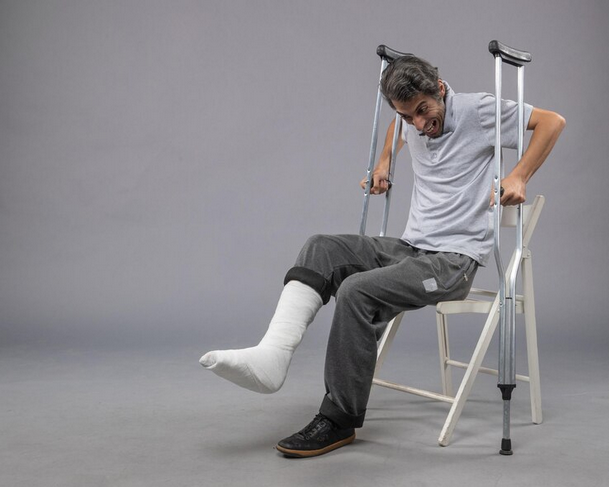Tibial stress fractures are a common concern, particularly among athletes and military personnel who engage in high-impact activities. Understanding the intricacies of these injuries is crucial for effective recovery and prevention of future occurrences. This article delves into the stress fracture of the tibia, exploring its causes, recovery process, and strategies for minimizing the risk of recurrence.
Understanding Tibial Stress Fractures
A stress fracture of the tibia occurs when the bone is subjected to repetitive stress that exceeds its ability to heal. Unlike a traditional fracture, which results from a single traumatic event, a stress fracture develops gradually due to overuse. This condition is prevalent among runners, military recruits, and individuals who suddenly increase their physical activity levels without adequate preparation.
The tibia, or shinbone, is particularly susceptible to these types of injuries because it bears the majority of the body’s weight during activities such as running, jumping, and marching. The repetitive impact can lead to microdamage in the bone, eventually resulting in a fracture if the stress continues without appropriate rest and recovery. Factors contributing to tibial stress fractures include improper footwear, excessive training intensity, poor biomechanics, and inadequate nutrition.
Symptoms and Diagnosis
Individuals suffering from a stress fracture of the tibia typically experience a gradual onset of pain along the shin. This pain often intensifies with weight-bearing activities and may initially subside with rest, only to return upon resuming activity. As the fracture worsens, the pain may become more localized, and tenderness can be felt upon palpation of the affected area.
Diagnosing a tibial stress fracture can be challenging, especially in the early stages when traditional X-rays may not reveal the injury. Healthcare providers often rely on a combination of patient history, physical examinations, and imaging techniques such as bone scans or magnetic resonance imaging (MRI) to confirm the diagnosis. Early and accurate diagnosis is essential for effective management and recovery.
The Recovery Process
Recovering from a stress fracture of the tibia requires a multifaceted approach that emphasizes rest, rehabilitation, and gradual reintroduction to physical activity. The recovery timeline can vary significantly based on the severity of the fracture and the individual’s overall health and adherence to treatment protocols.
Rest and Activity Modification
The cornerstone of recovery is rest. It is crucial to cease any high-impact activities that could exacerbate the injury. Depending on the severity, this may involve using crutches or a walking boot to minimize weight-bearing on the affected leg. The typical recovery period for a tibial stress fracture can range from four to twelve weeks. During this time, individuals are encouraged to engage in low-impact activities such as swimming or cycling, which allow for cardiovascular fitness without placing undue stress on the tibia.
Rehabilitation and Physical Therapy
Once the acute pain subsides, rehabilitation begins. Working with a physical therapist can provide valuable guidance in restoring strength and flexibility to the affected leg. Rehabilitation exercises should focus on strengthening the muscles surrounding the tibia, improving flexibility, and correcting any biomechanical issues that may have contributed to the injury.
Exercises may include:
- Calf raises to strengthen the calf muscles and improve support for the tibia.
- Balance exercises to enhance proprioception and stability.
- Low-impact strength training for the lower body, ensuring that the tibia is gradually reintroduced to stress in a controlled manner.
Gradual Return to Activity
Returning to high-impact activities should be done cautiously and gradually. Athletes and individuals recovering from a tibial stress fracture should follow a structured return-to-play protocol, which typically involves slowly increasing the intensity and duration of workouts while monitoring for any signs of pain or discomfort.
An effective strategy is to incorporate gait retraining, which focuses on correcting running mechanics that may have contributed to the injury. This might involve adjusting stride length, frequency, and foot strike patterns. Utilizing real-time feedback during training can significantly reduce the risk of re-injury.
Preventing Future Stress Fractures
While recovering from a stress fracture of the tibia is crucial, preventing future occurrences is equally important. A comprehensive prevention strategy includes the following key components:
Proper Footwear
Wearing the right shoes is essential. Footwear should provide adequate support and cushioning while being suited to the individual’s foot type and gait. Regularly replacing worn-out shoes is also critical, as old shoes lose their shock-absorbing capabilities.
Training Modifications
Avoiding sudden increases in training volume or intensity is vital. A gradual approach to increasing mileage or intensity helps the body adapt and strengthens the bones over time. Following the 10% rule—wherein training intensity or distance is increased by no more than 10% per week—can be a useful guideline.
Strengthening and Flexibility
Incorporating strength training and flexibility exercises into a regular fitness routine can significantly reduce the risk of injury. Strengthening the muscles that support the tibia, particularly the calves, hamstrings, and quadriceps, is essential. Stretching can also improve flexibility and help maintain a full range of motion in the joints.
Nutritional Considerations
Proper nutrition plays a crucial role in bone health. Ensuring adequate intake of calcium and vitamin D is essential for bone density and strength. Athletes should also focus on a balanced diet that supports overall health and energy levels.
Conclusion
Recovering from a stress fracture of tibia requires patience, commitment, and a comprehensive approach that includes rest, rehabilitation, and preventive strategies. Understanding the underlying causes of tibial stress fractures and taking proactive measures can significantly enhance recovery and reduce the risk of future injuries. Emphasizing proper footwear, gradual training modifications, and adequate nutrition is critical to ensure long-term health and performance. By taking these steps, individuals can not only recover from their injuries but also return to their activities stronger and more resilient.
For further insights and evidence-based strategies on managing and preventing tibial stress fractures, refer to resources available at Ler Magazine.



